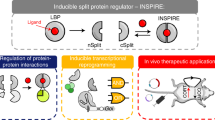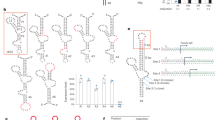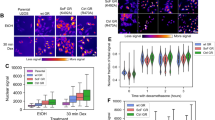Abstract
To facilitate the understanding of the complex process of target gene expression and its control, we report a modified inducible system for activation or repression of target gene expression in response to an exogenously administered compound. The main component of this inducible system is a chimeric transcriptional activator (GLVP) consisting of an N-terminal VP16 transcriptional activation domain fused to a yeast GAL4 DNA binding domain and a mutated human progesterone receptor (hPR) ligand binding domain (LBD). This chimeric regulator binds to a target gene containing the 17-mer GAL4 upstream activation sequence (UAS) in the presence of anti-progesterone, RU486. We showed that the combination of two different types of domains (VP16 and poly-glutamine stretch) into one chimeric molecule could result in a further increase in transcriptional activation potency. Through mutational analysis, we modified the original GLVP and generated a more potent version of the RU486 inducible regulator GL914VPC′ with a 19 amino acid deletion of the hPR-LBD (ΔC19) and a C-terminally located VP16 activation domain. More importantly, this new chimeric regulator can effectively activate target gene expression at a much lower concentration of RU486 (0.01 nM). The concept of RU486 regulatable gene expression is not limited to gene activation. By replacing the VP16 activation domain with a KRAB transcriptional repression domain, we are able to achieve inducible repression of target gene expression. We also present evidence that individual functional domains within a chimeric protein could modulate each other's function depending on their relative positions within the molecule. Using this potent regulator, we demonstrate that inducible nerve growth factor (NGF) secretion into conditioned media can elicit neurite outgrowth in co-cultured PC12 cells. This new versatile inducible system can potentially be used to control target gene expression in a mammalian system in vivo.
This is a preview of subscription content, access via your institution
Access options
Subscribe to this journal
Receive 12 print issues and online access
$259.00 per year
only $21.58 per issue
Buy this article
- Purchase on Springer Link
- Instant access to full article PDF
Prices may be subject to local taxes which are calculated during checkout
Similar content being viewed by others
Author information
Authors and Affiliations
Rights and permissions
About this article
Cite this article
Wang, Y., Xu, J., Pierson, T. et al. Positive and negative regulation of gene expression in eukaryotic cells with an inducible transcriptional regulator. Gene Ther 4, 432–441 (1997). https://doi.org/10.1038/sj.gt.3300402
Received:
Accepted:
Issue Date:
DOI: https://doi.org/10.1038/sj.gt.3300402
Keywords
This article is cited by
-
Mifepristone-inducible transgene expression in neural progenitor cells in vitro and in vivo
Gene Therapy (2016)
-
Protein Transfer Into Human Cells by VSV-G-induced Nanovesicles
Molecular Therapy (2011)
-
Characterization of a molecular switch system that regulates gene expression in mammalian cells through a small molecule
BMC Biotechnology (2010)
-
Regulation of endogenous gene expression using small molecule-controlled engineered zinc-finger protein transcription factors
Gene Therapy (2007)
-
Suppression of colorectal tumor growth by regulated survivin targeting
Journal of Molecular Medicine (2006)



